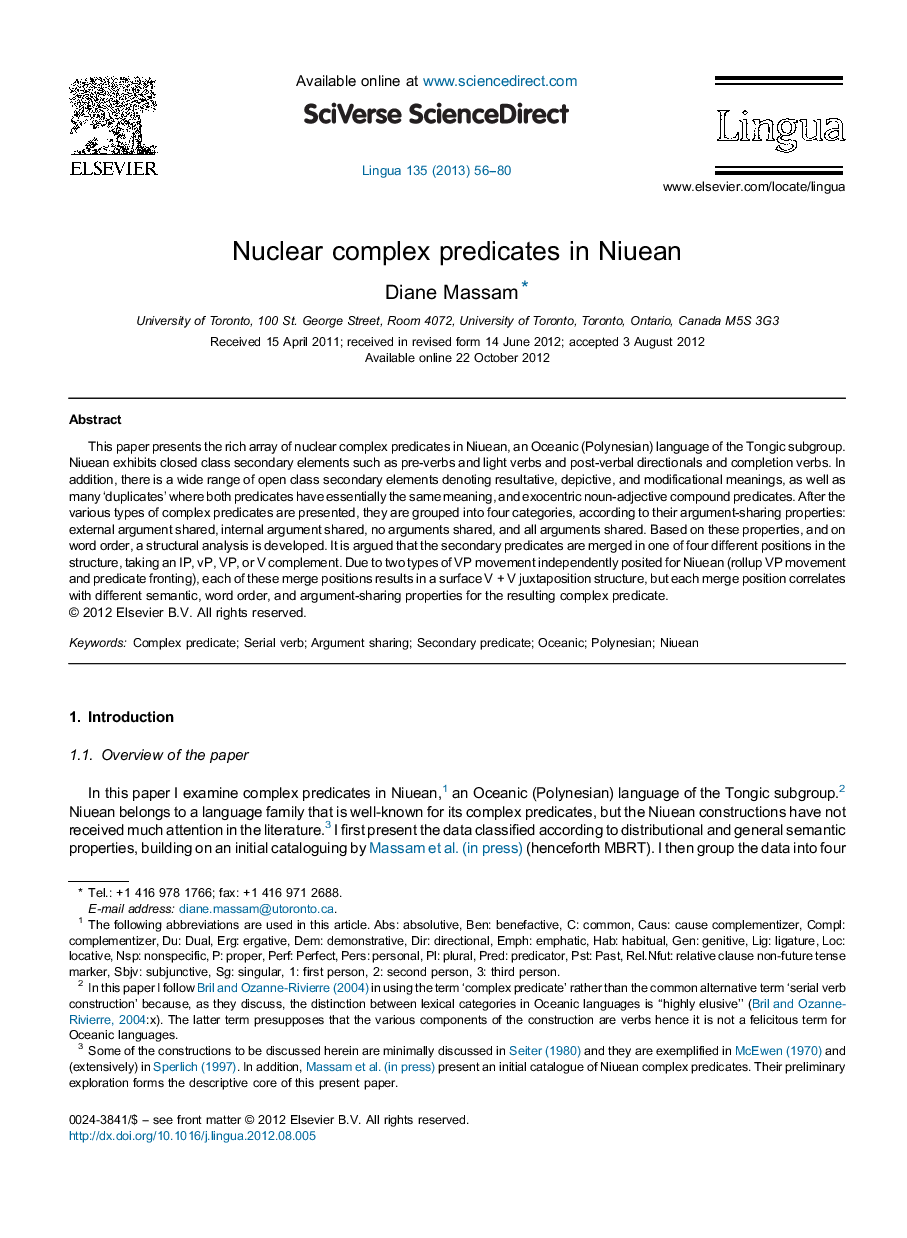| Article ID | Journal | Published Year | Pages | File Type |
|---|---|---|---|---|
| 935689 | Lingua | 2013 | 25 Pages |
This paper presents the rich array of nuclear complex predicates in Niuean, an Oceanic (Polynesian) language of the Tongic subgroup. Niuean exhibits closed class secondary elements such as pre-verbs and light verbs and post-verbal directionals and completion verbs. In addition, there is a wide range of open class secondary elements denoting resultative, depictive, and modificational meanings, as well as many ‘duplicates’ where both predicates have essentially the same meaning, and exocentric noun-adjective compound predicates. After the various types of complex predicates are presented, they are grouped into four categories, according to their argument-sharing properties: external argument shared, internal argument shared, no arguments shared, and all arguments shared. Based on these properties, and on word order, a structural analysis is developed. It is argued that the secondary predicates are merged in one of four different positions in the structure, taking an IP, vP, VP, or V complement. Due to two types of VP movement independently posited for Niuean (rollup VP movement and predicate fronting), each of these merge positions results in a surface V + V juxtaposition structure, but each merge position correlates with different semantic, word order, and argument-sharing properties for the resulting complex predicate.
► 10 types of nuclear complex predicates are presented in Niuean (Oceanic). ► Nuclear complex predicates in Niuean exhibit four argument sharing patterns. ► Nuclear complex predicates arise from predicates selecting V, VP, vP or IP complements. ► There are 2 types of VP movement in Niuean: rollup movement and predicate fronting.
